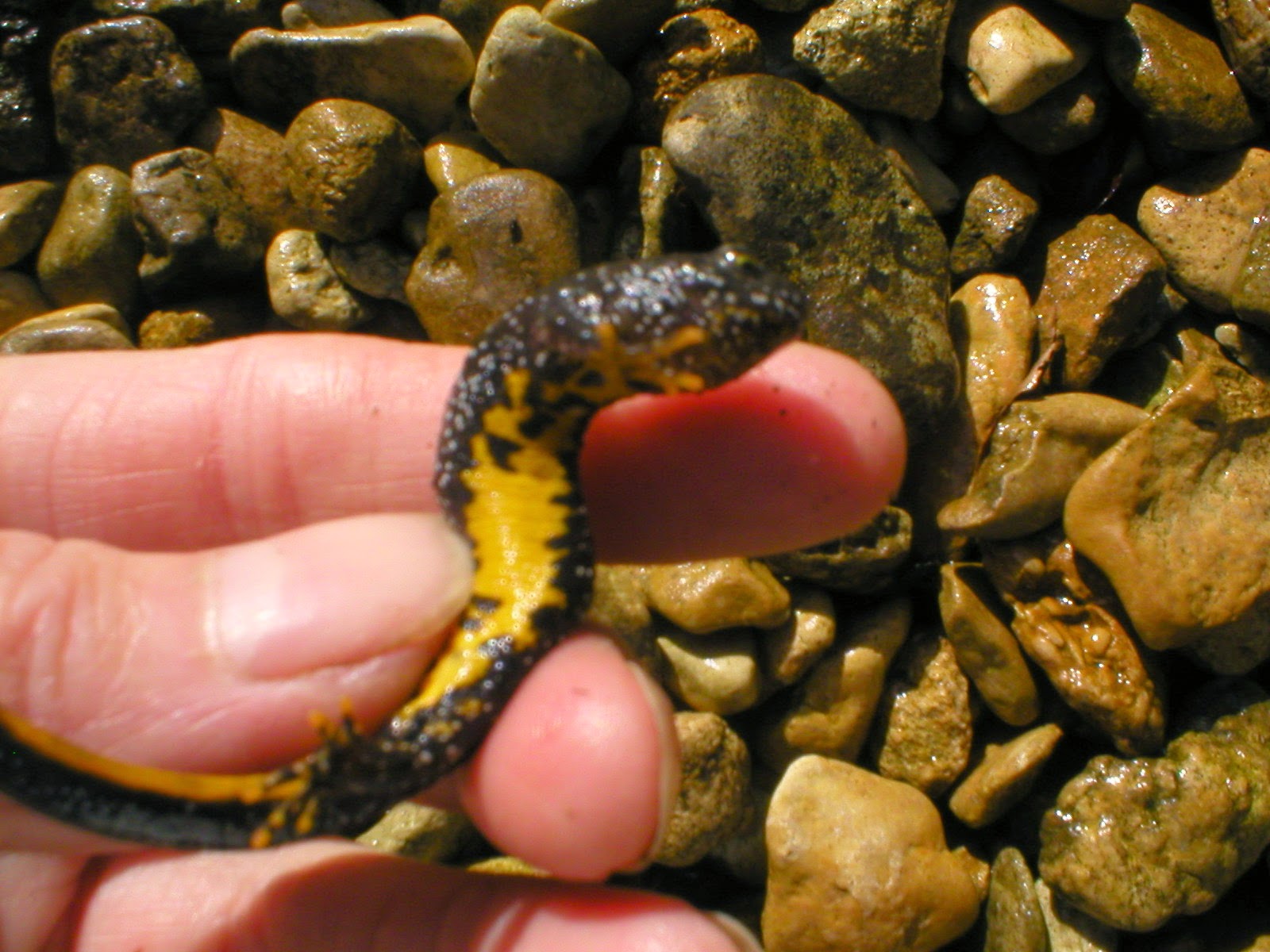And yet I keep finding newts.
Usually, they are common newts:
 Here's one I found earlier: they are small, brown, and have teeny tiny toeses, which are rather sweet.
Here's one I found earlier: they are small, brown, and have teeny tiny toeses, which are rather sweet.When picked up, (not for the fun of it, but to move them from harm's way) they tend to sit absolutely still, hoping not to attract attention. But if you wait patiently, they will start walking away.
In winter, when they are very cold, sometimes they seem to need time to "warm up" from the heat of my hand before they stir themselves. I understand that they don't actually hibernate, but they do go into "torpor" which is a state of very low metabolism. I always feel bad if I come across them in very cold weather, so I try to get them somewhere safe quickly, with the least disturbance possible.
Why do I disturb them at all, I hear you ask, crossly, hands on hips? Answer, because they will insist on invading my pots of plants. Typically, I find them when I tip out a pot to check on the roots before it goes up for sale, or when I lift a trayful of plants onto the workbench for primping, and I find them in amongst the contents.
Here's one that nearly got squashed, as he was lurking in the tray and I didn't see him until I had emptied out all the pots.
As well as the common ones, I sometimes find less common ones - these are some Great Crested Newts taking a stroll across the shingle:
As you can see, I have different sizes, and I find them most years, so I have assumed that I have a breeding population.
They are easily recognised by being shiny, black, and very chunky,
To give you an idea of scale, here is my hand, gently picking up the larger one, in order to...
...turn him over to show you the bright yellow underneath.
They don't have any apparent crests, by the way, because I tend to mostly find them in winter, and they only produce the crests in the mating season, which is late spring.
Or, possibly, I only ever find females!!
Either way, I don't mind, I am quite happy to share my front yard with them.
In case you are wondering where they come from, there is an old canal about 150 yards from my house, so I assume that they wander down there for the summer, to breed, then stagger all the way back uphill to my yard for their winter holidays.
Sadly, they are about to build 150 houses on the field between my house and the canal, so I don't know if I will find them in my yard in future years, as they will have to run a gamut of roads, cars, pedestrians, obstructions, hard surfacing, predation by birds while crossing areas with no cover, and so on in order to get back here.
Or maybe they will find a new winter home in the garden of one of the new houses, with less far to walk?
Let's hope so, eh?
Did you enjoy this article? Did you find it useful? Would you like me to answer your own, personal, gardening question? Become a Patron - just click here - and support me! Or use the Donate button for a one-off donation. If just 10% of my visitors gave me a pound a month, I'd be able to spend a lot more time answering all the questions!!























